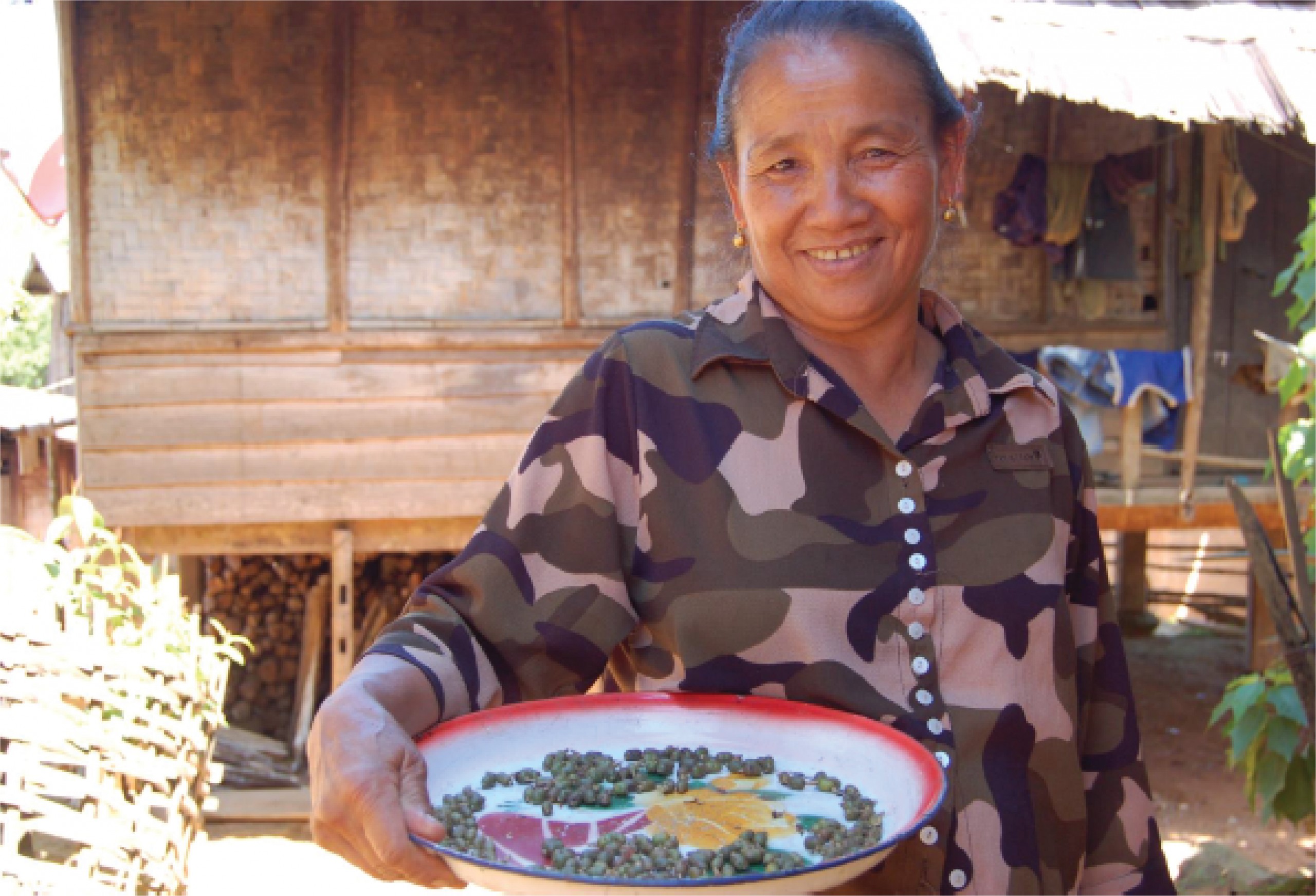Sanker’s and her family’s survival depends on the income from their agriculture. The source of income is fragile and unstable in a changing and unpredictable climate.
61-year-old Sanker lives in the northern Laos in the village Namloy. Here, the resources are limited. Her family consists of her husband and their 11 children and they are making a living by growing galangal and cardamom. The conditions are not easy for Sanker and her family, and climate change is making it even more difficult to count on a stable income since the family cannot make sure the harvest is going to be successful, especially not with the unpredictable and changing weather that Sanker and her family are experiencing at the moment. Sanker has found her way of a solution: by growing two different crops, she can stabilize her income.
When two crops are better than one
Sanker began to grow galangal back in 2004, as it was the only crop she was able to obtain at that time. Galangal was not in high demand so she could only earn 15,000 kip per kg for dried galangal, the equivalent to 1.53 euro. Therefore, the family’s income was still very low.
Six years later, Sanker was able to get some cardamom plants from a relative, who is living in a village close by, so she could grow her own cardamom plantation. At that time, the cardamom was in especially high demand, which was the primary motivation for Sanker to start growing cardamom. In 2010 she could sell one kg for 50,000 kip, the equivalent to 5.11 euro, which helped Sanker to earn a lot more compared to her income when growing galangal.

Today Sanker is growing both crops as it gives her greater security. Climate change means that the weather conditions are becoming more unpredictable. This year has seen increasing rain, higher temperatures and the rain began later than it usually does. All conditions that affect the harvest and therefore also how much she is able to earn, and all something she cannot control.
By growing two different crops that react different to a changing climate, she can secure a more stable income to make sure she earns enough to feed the family.
At the same time, the prices on the crops fluctuate. Some years the cardamom is in high demand while others it is not. The unstable prices are yet another challenge for Sanker and her ability to secure a minimum income needed.
Since 2004, when she began growing galangal, the price for the dried ones have increased with 133% meaning that she can earn now 35,000 kip per kg, the equivalent to 3.58 euro. In the same period of time, the price on cardamom has fallen 138% from 500,000 kip to 210,000 kip per kg.
Prospect for a better future
Since Sanker began growing two different types of crops, she has seen progress in her yearly income and that gives her hope for the future.
In 2017 Sanker received training on how to grow galangal and she was also given 300 kg galangal plants so she could expand her plantation.
“CARE gave me small galangal trees and taught me how to grow them. I have learned about the process of growing galangal. From how to plant them to the harvest,” says Sanker. She is holding some of the galangals from this year’s harvest in her hands and she is proudly showing it. This is what has given her more stability in her and her family’s life.
“I want my children to get a good education so they are able to get a job in the future. I want them to be able to take care of themselves and me when I get older,” says Sanker while she is smiling.
And there is a reason for smiling. Sanker used to earn 400,000-500,000 kip, the equivalent to 40-51 euro, per year but this year she earned 20,000.000 kip equivalent to 2,040 euro. A progress so significant that she does not have to settle for dreaming of her children getting an education. She can actually make the dream come true.


